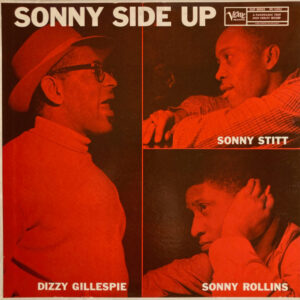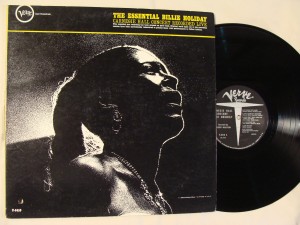Quote of the Day:
“What is soul in jazz? It’s what comes from within: It’s what happens when the inner part of you comes out. It’s the part of playing you can’t get out of the books and studies. In my case, I believe that what I heard and felt in the music of my church was the most powerful influence on my musical career. Everyone wants to know where I got that funky style. Well, it came from the church. The music I heard there was open, relaxed, impromptu – soul music.” — Milt Jackson, from the liner notes to the LP Plenty, Plenty Soul, Atlantic 1269, liner notes by Nat Hentoff.
One of the criticisms of the Modern Jazz Quartet was that the structure of the band held back the playing of the brilliant vibist Milt Jackson. This was Jackson’s response when he was asked if, indeed, being in the MJQ held him down:
“No, not actually. It may not sound or look like it when you’re listening out front because it’s all so well planned, but I still get to play more or less what I want to play. I’m relaxed. I’ve always been able to adjust myself to a situation. When I first joined the MIQ, there were times when I looked at the planning as a handicap, but now I’ve come to look on it as an asset. In terms of the business, and musically too. Discipline can be a good thing and having been under discipline can be a help when you do let loose.” — Source: Liner notes to the LP Milt Jackson, Plenty, Plenty Soul, Atlantic 1269. Liner notes by Nat Hentoff.
“Lester was a one or two take man. He’d say, ‘I can’t do anything better than that,’ and usually that was it. His statements were emotional ones and when they were done, they were done.”
Norman Granz on Lester Young. Liner notes from the album The Lester Young Story, Verve MG V-8308, 1960. Liner notes by Nat Hentoff.
 Did you know that Booker Erwin is the tenor sax player on the album Mingus Ah Um? Or that it is the tenor saxophone that Sonny Stitt plays on the album Saxophone Supremacy? Or that John Coltrane wrote the song Afro Blue on the Impulse album Live at Birdland? I didn’t know any of this because none of it is true. Except that’s what it says in the liner notes or on the labels. In the process of doing my weekly two-hour radio show/podcast I’m discovering a surprisingly large number of typos and misinformation on liner notes. I was playing the Verve Dizzy Gillespie album Sonny Side Up with Sonny Rollins and Sonny Stitt. I looked at the liner notes for On the Sunny Side of the Street. It said quite clearly that Rollins has the opening solo and then Stitt has the solo after Dizzy. Listen to the record. Read more
Did you know that Booker Erwin is the tenor sax player on the album Mingus Ah Um? Or that it is the tenor saxophone that Sonny Stitt plays on the album Saxophone Supremacy? Or that John Coltrane wrote the song Afro Blue on the Impulse album Live at Birdland? I didn’t know any of this because none of it is true. Except that’s what it says in the liner notes or on the labels. In the process of doing my weekly two-hour radio show/podcast I’m discovering a surprisingly large number of typos and misinformation on liner notes. I was playing the Verve Dizzy Gillespie album Sonny Side Up with Sonny Rollins and Sonny Stitt. I looked at the liner notes for On the Sunny Side of the Street. It said quite clearly that Rollins has the opening solo and then Stitt has the solo after Dizzy. Listen to the record. Read more



